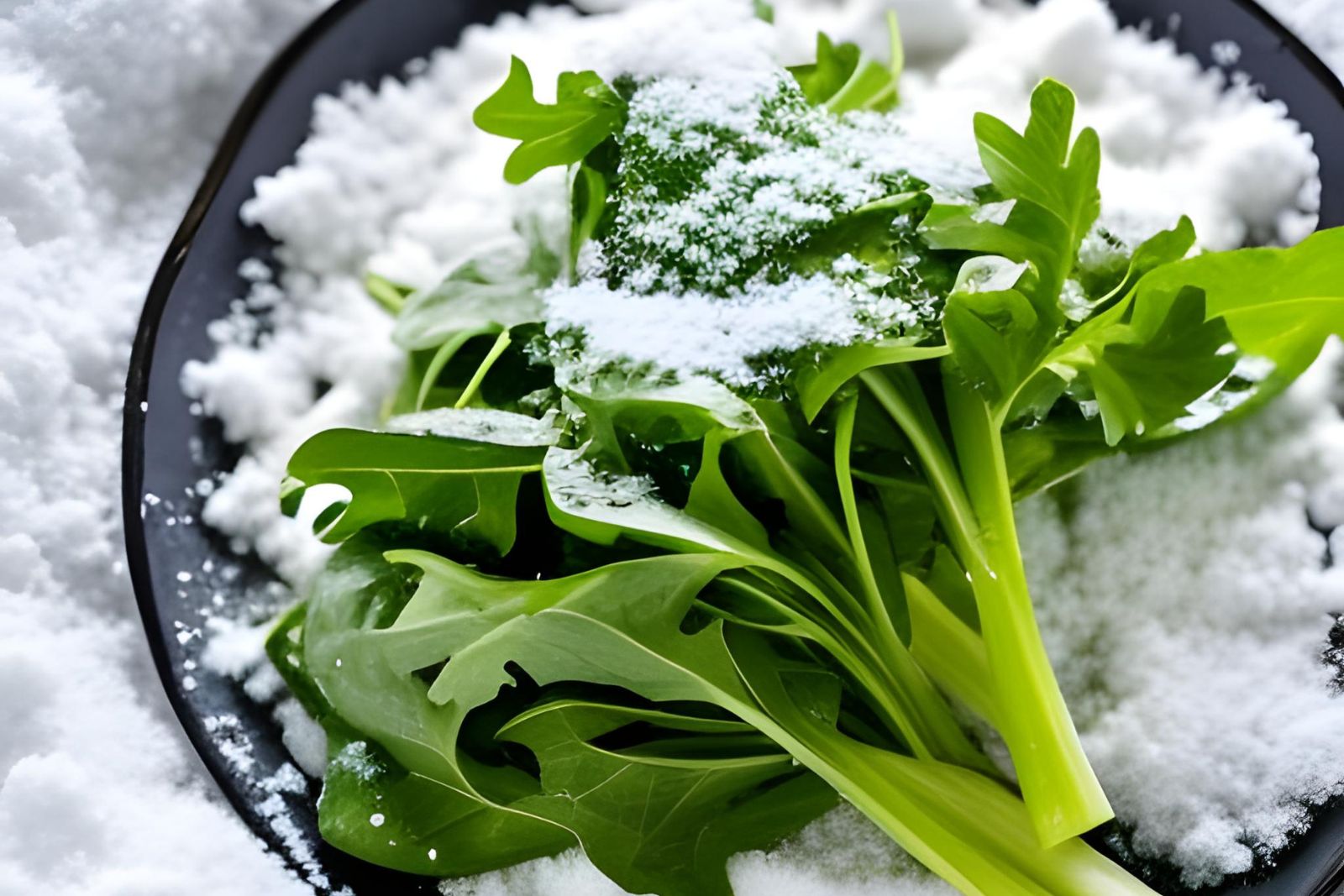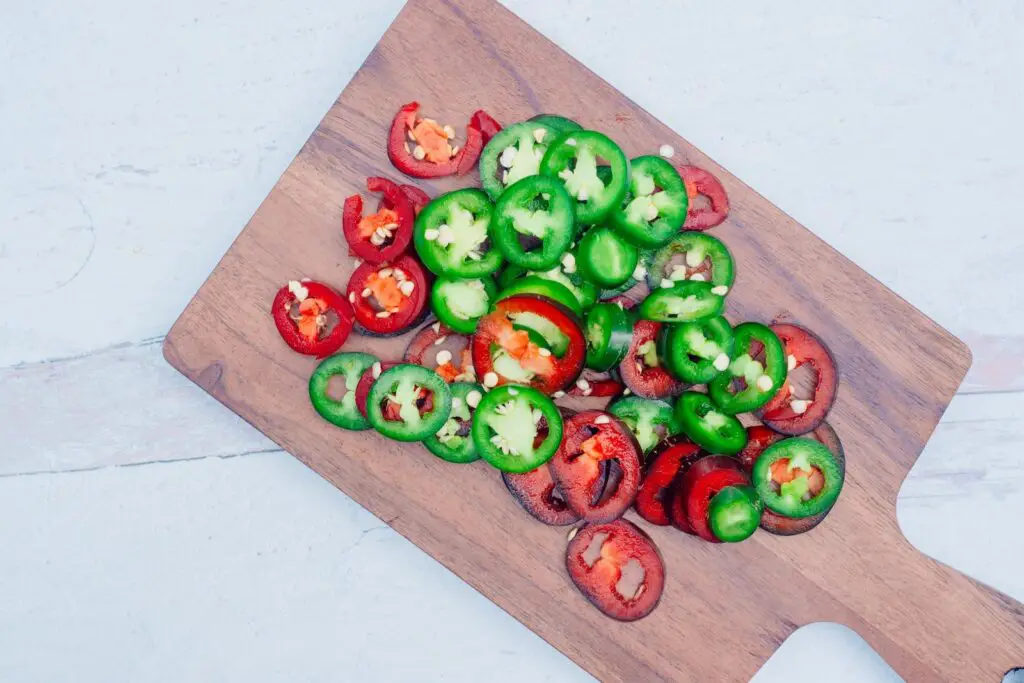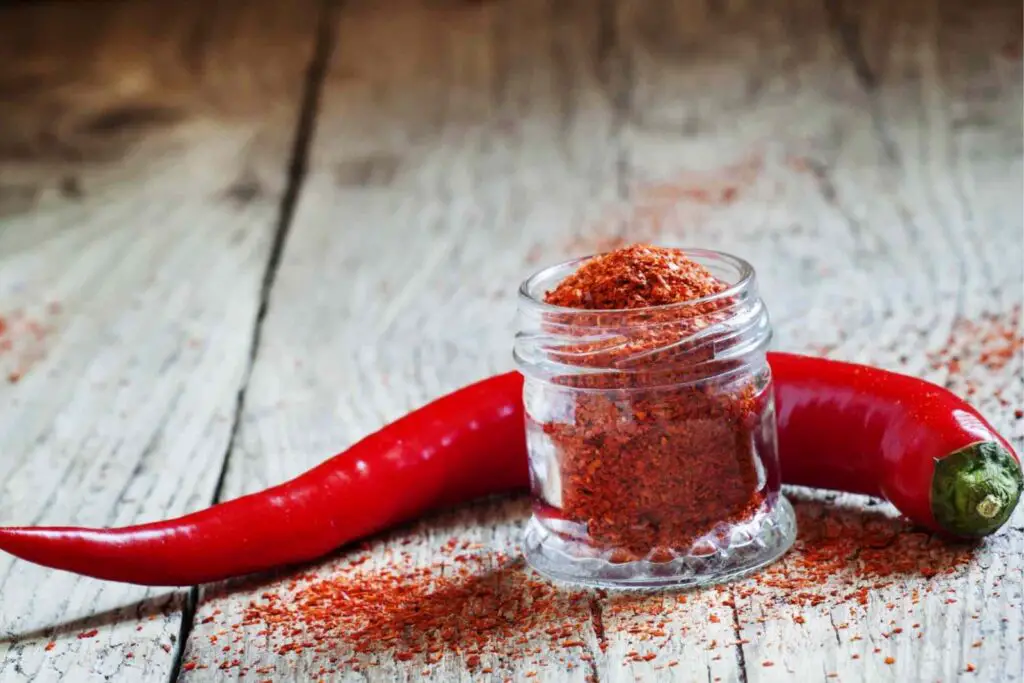
Arugula, also known as rocket or rucola, is a leafy green vegetable that adds a distinctive peppery flavor to salads, sandwiches, and various dishes. It is characterized by its dark green, deeply lobed leaves, and tender texture. Arugula is highly nutritious, rich in vitamins A, C, and K, as well as minerals like potassium and calcium. Whether you have a surplus of arugula or want to preserve its freshness for future use, freezing can be a practical method. Freezing arugula allows you to extend its shelf life while retaining its flavor and nutritional value. In the following section, we will explore the process of freezing arugula and provide tips for optimal results.
Here are the steps to freeze arugula:
Step 1: Prepare the arugula
Before freezing arugula, it’s crucial to start with fresh and healthy leaves. This step ensures that the frozen arugula retains its quality and flavor when thawed and used in future recipes. Here’s why it’s important to prepare the arugula properly:
- Washing: Washing arugula under cold running water helps remove any dirt, sand, or other contaminants that may be present on the leaves. It is essential to wash the leaves thoroughly to ensure that no unwanted particles remain, which could affect the taste and texture of the arugula when frozen.
- Removing dirt and debris: By carefully inspecting the leaves, you can identify any damaged or wilted parts that need to be discarded. These leaves may have already started deteriorating, and including them in the freezing process could negatively impact the overall quality of the frozen arugula.
- Retaining freshness: Working with fresh arugula guarantees a more vibrant and flavorful result. Freshly harvested or store-bought arugula that is in good condition will freeze better and maintain its taste and texture during storage. Starting with high-quality arugula ensures that the frozen leaves will still provide a delicious and nutritious addition to your meals.
Step 2: Blanch the arugula
Blanching is a critical step in freezing arugula as it helps maintain its color, texture, and flavor throughout the freezing process. By subjecting the arugula to a brief boiling water bath followed by an ice water bath, you can preserve its vibrant green color and crispness. Here’s why blanching is essential:
- Enzyme deactivation: Arugula contains natural enzymes that, if left untreated, can cause it to deteriorate quickly, resulting in a loss of flavor, texture, and color. Blanching helps inactivate these enzymes, slowing down the natural degradation process and preserving the arugula’s quality.
- Retaining color: The brief exposure to boiling water during blanching helps preserve the bright green color of the arugula. The heat breaks down the enzymes responsible for color loss, ensuring that the frozen arugula retains its appealing appearance even after thawing.
- Texture preservation: Blanching helps maintain the crispness and texture of arugula. The quick cooking process blanches the leaves without fully cooking them, ensuring that they retain their fresh and crunchy texture. This is especially important when using frozen arugula in cooked dishes where texture is crucial.
- Microbial reduction: Blanching also helps reduce the microbial load present on the arugula leaves, minimizing the risk of bacterial growth during freezing. The high heat of boiling water helps eliminate potential pathogens, enhancing the safety of the frozen arugula.
To blanch arugula, you bring a large pot of water to a rolling boil and then immerse the arugula in the boiling water for a short period, typically between 30 seconds to 1 minute. This blanching time is sufficient to achieve the desired enzymatic deactivation and microbial reduction while retaining the freshness of the leaves.
After blanching, transferring the arugula immediately to an ice water bath helps halt the cooking process, preventing overcooking and preserving the crispness and color. The rapid cooling in ice water also helps maintain the arugula’s nutritional value.
Can I freeze arugula without blanching it?
While blanching arugula is recommended for optimal results, you can freeze arugula without blanching it if needed. However, be aware that skipping the blanching step may result in a slightly altered texture and flavor once thawed. Blanching helps preserve the color, texture, and flavor of arugula by briefly cooking it before freezing, but if you choose to skip this step, ensure that the arugula is fresh, properly washed, and thoroughly dried before freezing to maintain its quality as much as possible.
Step 3: Drain and dry the arugula
After blanching and cooling the arugula, it’s important to remove any excess moisture before freezing. Draining and drying the arugula thoroughly helps prevent the formation of ice crystals, which can negatively affect its quality and texture during freezing. Here’s why draining and drying are essential:
- Ice crystal prevention: If arugula is frozen with excess moisture, ice crystals can form on the leaves. These ice crystals can cause cell damage and result in a mushy texture when the arugula is thawed. By draining and drying the arugula before freezing, you reduce the amount of moisture present, minimizing the risk of ice crystal formation and preserving the crispness of the leaves.
- Texture preservation: Removing excess water from the arugula ensures that it retains its desired texture after freezing and thawing. Wet arugula can become limp and lose its crispness during the freezing process, resulting in a less appetizing texture when used in dishes later on. Properly draining and drying the arugula helps maintain its fresh and crunchy texture.
- Prevention of freezer burn: Freezer burn occurs when moisture on the surface of food evaporates and recondenses, leading to dehydrated spots. By removing excess moisture from the arugula, you reduce the chances of freezer burn, ensuring that the frozen leaves remain flavorful and enjoyable.
To drain and dry the blanched arugula, start by removing it from the ice water bath and allowing any excess water to drip off. Gently squeeze the arugula to remove as much moisture as possible without damaging the leaves. Then, transfer the arugula to a clean kitchen towel or paper towel and pat it dry. The towels will absorb any remaining moisture and ensure that the arugula is as dry as possible before freezing.
Step 4: Portion and pack the arugula
Once the arugula is properly prepared, portioning and packing it correctly is crucial for maintaining its quality and preventing freezer burn. Here’s why portioning, wrapping, and packaging are important:
- Portioning for convenience: Deciding on the portion size based on your needs allows for convenient usage later on. Whether you prefer smaller bundles or larger portions, portioning the arugula ensures that you can easily grab the desired amount without thawing the entire batch. This flexibility allows you to use only what you need while keeping the rest frozen for future use.
- Protection from freezer burn: Freezer burn occurs when food is exposed to air inside the freezer, leading to dehydration and the degradation of flavor and texture. Wrapping each portion of arugula tightly in plastic wrap creates a protective barrier against air and helps prevent freezer burn. The plastic wrap seals in moisture and preserves the arugula’s quality during freezing.
- Additional layer of protection: Placing the plastic-wrapped arugula bundles in a freezer-safe bag or airtight container provides an extra layer of protection. These containers further safeguard the arugula from exposure to air, moisture, and potential odors in the freezer. They help maintain freshness and prevent any cross-contamination with other frozen items.
- Excess air removal: Squeezing out any excess air from the bag or container before sealing it is essential for optimal preservation. Air contains moisture and can contribute to the formation of ice crystals and freezer burn. Removing excess air reduces the chances of these issues and helps keep the arugula in the best possible condition.
To portion and pack the arugula, start by dividing it into the desired portion sizes. Wrap each portion tightly in plastic wrap, ensuring there are no gaps or openings. Then, place the plastic-wrapped arugula bundles in a freezer-safe bag or airtight container. Press out as much air as possible before sealing the bag or container to create a vacuum-like seal.
Can I freeze arugula in bulk without portioning it?
While it is possible to freeze arugula in bulk without portioning it, it may result in some challenges when it comes to convenience and usage. Freezing arugula in bulk can make it difficult to separate and thaw only the amount you need for a particular recipe or meal. It is generally more convenient to portion the arugula before freezing, allowing you to easily grab the desired amount without thawing the entire bulk
Step 5: Label and date the package
Labeling and dating the package containing frozen arugula is a crucial step in organizing your freezer and ensuring proper usage of the preserved arugula. Here’s why labeling and dating are important:
- Identification of contents: By labeling the package, you can easily identify the frozen arugula among other items in your freezer. This prevents confusion and helps you quickly locate and access the arugula when needed. Marking the package with the contents allows for efficient meal planning and avoids wastage.
- Shelf life tracking: Adding the date of freezing to the label enables you to keep track of how long the arugula has been frozen. While frozen arugula can be stored for an extended period, its quality may deteriorate over time. By knowing the date of freezing, you can prioritize the usage of the arugula and ensure that you consume it within the recommended storage duration.
- Quality control: The labeled date also serves as a reference point to assess the quality and freshness of the arugula. Over time, frozen arugula may experience some changes in flavor, texture, or nutritional value. Having the date labeled allows you to make informed decisions about the usability of the arugula and helps maintain high standards for your culinary creations.
To label the package, use a permanent marker to write the contents, such as “Frozen Arugula,” on the plastic wrap or freezer-safe bag. Additionally, indicate the date of freezing, including the month, day, and year. Place the label in a visible location on the package for easy reference.
Step 6: Freeze the arugula
After properly labeling and packaging the arugula, the final step is to place it in the freezer for long-term storage. Freezing the arugula promptly and ensuring its protection from physical damage is crucial. Here’s why freezing the arugula correctly is important:
- Preservation of quality: Placing the labeled and packed arugula in the freezer as soon as possible helps preserve its freshness, flavor, and nutritional value. Freezing halts the growth of bacteria, yeast, and molds which can lead to spoilage. By freezing the arugula promptly, you lock in its quality at the point of freezing, allowing you to enjoy its taste and nutritional benefits when used later.
- Protection from damage: It’s essential to place the arugula in a location in the freezer where it won’t be crushed or damaged by other items. Avoid placing heavy objects on top of the arugula or positioning it in a spot where they can be easily disturbed. Proper placement ensures that the arugula maintains its shape, texture, and overall integrity during freezing.
- Freezing time: The arugula will freeze solid within a few hours, depending on the temperature and airflow within your freezer. The quick freezing process helps retain the arugula’s freshness and quality. It’s important to note that the faster the arugula freezes, the better its texture and flavor will be when thawed.
To freeze the arugula, carefully place the labeled and packed bundles in the freezer. Choose a location where the arugula won’t be subjected to unnecessary pressure or damage. Arrange the arugula in a way that it can freeze quickly and remain undisturbed until needed.
Remember to keep the freezer temperature at or below 0°F (-18°C) to ensure optimal freezing and preservation of the arugula.
Other related questions
How can I thaw frozen arugula?
Thawing frozen arugula is a simple process that requires minimal effort. To thaw the frozen arugula, transfer the desired amount from the freezer to the refrigerator and allow it to thaw overnight. This slow and gentle thawing process helps preserve the texture and flavor of the arugula. Once thawed, gently squeeze out any excess moisture before using the arugula in your preferred recipes. Avoid using heat or microwaving to thaw frozen arugula, as it can result in a soggy texture.
How long can frozen arugula be stored in the freezer?
Frozen arugula can be stored in the freezer for an extended period, typically up to 8 to 12 months. However, for optimal quality and flavor, it is recommended to use the frozen arugula within 3 to 6 months. Over time, the texture and taste of the arugula may gradually deteriorate due to potential freezer burn and the natural aging process. Proper packaging, labeling, and storage at a consistent freezer temperature of 0°F (-18°C) or below can help maximize the shelf life of frozen arugula. It’s always advisable to check the quality of the arugula before use and discard it if there are any noticeable signs of freezer burn or degradation.
Can I refreeze the previously thawed arugula?
It is generally not recommended to refreeze previously thawed arugula. When arugula is thawed, its texture and quality may change, and refreezing can further degrade its taste, texture, and nutritional value. Additionally, each freeze-thaw cycle increases the risk of bacterial growth. To prevent waste, it’s best to thaw only the amount of arugula you need for immediate use and store the remaining frozen arugula separately to maintain its quality. Proper portioning and planning can help minimize the need for refreezing.
How do I know if my frozen Arugula has gone bad?
To determine if your frozen arugula has gone bad, there are a few signs to look out for. Firstly, check for any noticeable color changes. If the arugula appears discolored or has turned brown or yellow, it may indicate spoilage. Additionally, if the texture of the arugula feels slimy or mushy rather than crisp, it is likely no longer suitable for consumption. Lastly, if there is an off-putting odor or the taste is significantly different from fresh arugula, it is best to discard the frozen arugula as it may have gone bad. When in doubt, it is always safer to err on the side of caution and discard any arugula that you suspect may be spoiled.
Can I use frozen arugula with fresh ones?
Yes, you can use frozen arugula alongside fresh arugula in certain dishes. However, it’s important to note that the texture of frozen arugula may be softer and slightly wilted compared to fresh arugula. This makes frozen arugula more suitable for cooked dishes such as soups, stews, or sautés, where the texture difference is less noticeable. It’s best to use fresh arugula for raw applications like salads or garnishes to ensure a crisp and vibrant texture. Mixing both frozen and fresh arugula can provide a balance of convenience and freshness in your culinary preparations.
How does freezing arugula affect its taste and texture?
Freezing arugula can slightly alter its taste and texture. When frozen, arugula may become slightly softer and more wilted compared to its fresh counterpart. The freezing process can cause the cell structure to break down, leading to a potential loss of crispness. However, the overall flavor of arugula can still be maintained, making it suitable for use in cooked dishes where texture is less critical.
Can I freeze arugula straight from the grocery store?
It is generally recommended to wash and prepare arugula before freezing it, rather than freezing it straight from the grocery store. Freezing unwashed arugula can lead to ice crystal formation and degradation of texture and flavor. It is best to wash and thoroughly dry the arugula, remove any excess moisture, and follow the proper blanching and freezing process to ensure the best results when freezing the arugula.
Can I freeze arugula stems?
While it is possible to freeze arugula stems, it’s important to note that the texture of the stems may become more fibrous and less desirable after freezing. If you choose to freeze arugula stems, ensure they are washed and thoroughly dried before packaging. Consider using them in cooked dishes or recipes where the texture change is less noticeable, such as soups, stews, or stocks.
Can I freeze arugula that has been seasoned or dressed?
It is not recommended to freeze arugula that has been seasoned or dressed. Freezing seasoned or dressed arugula can result in a loss of flavor and texture as the freezing process can affect the ingredients used for seasoning or dressing. It is best to freeze plain, unseasoned arugula and add seasonings or dressings after thawing when you are ready to use it.
Can I freeze arugula pesto?
Yes, you can freeze arugula pesto. It is recommended to freeze pesto in an ice cube tray or airtight container with a layer of oil on top to prevent it from browning or developing freezer burn. Frozen arugula pesto can last up to 6 months in the freezer and can be thawed in the refrigerator or at room temperature. It is a great way to preserve the flavor of arugula and have homemade pesto on hand for quick and easy meals.








